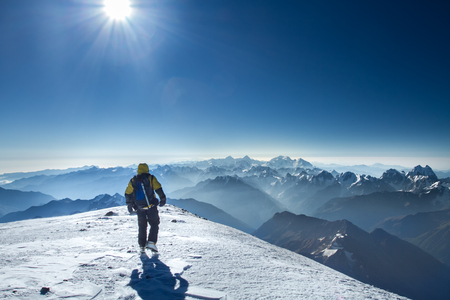Introduction to White Sands National Park
Nestled in the heart of southern New Mexico, White Sands National Park is a breathtaking natural wonder known for its stunning white gypsum dunes. Unlike any other landscape in the United States, these shimmering sands stretch over 275 square miles, creating a surreal and mesmerizing environment that feels almost otherworldly. The park’s unique beauty has captivated visitors for generations, offering not only panoramic vistas but also an immersive experience into one of nature’s most extraordinary ecosystems. Established as a national monument in 1933 and later designated as a national park in 2019, White Sands holds significant cultural and geological history. Its dazzling dunes are formed from gypsum crystals, which are rarely found as sand because they dissolve easily in water—a testament to the area’s distinct climatic and geologic conditions. As you explore the park, you’ll discover more than just beautiful scenery; you’ll step into a place where ancient fossilized footprints, stories of early Native American inhabitants, and diverse desert wildlife all come together to paint a picture of resilience and adaptation. Whether you’re drawn by the allure of its iconic landscapes or its rich history, White Sands National Park invites everyone—from adventurous hikers to families seeking a unique getaway—to experience the magic and tranquility of this incredible American treasure.
2. Getting Ready for Your Adventure
Preparing for a trek at White Sands National Park, especially along the Alkali Flat Trail, is all about timing, smart packing, and respecting the unique challenges of a desert climate. Here’s how to set yourself up for a safe and memorable adventure.
Best Time to Visit
The New Mexico desert can be extreme—scorching in summer and surprisingly chilly in winter. For comfortable hiking, plan your trip between October and April when daytime temperatures are milder (typically 60–75°F). Early mornings or late afternoons are ideal for avoiding both midday heat and crowds. If you visit during summer, start your hike as soon as the park opens, and always check weather alerts for wind or storms.
What to Pack: Essentials Checklist
| Item | Why You Need It |
|---|---|
| Water (at least 2 liters per person) | Stay hydrated—there’s no shade or water on the trail |
| Sun protection (hat, sunglasses, SPF 30+ sunscreen) | Desert sun is intense even on cloudy days |
| Lightweight, breathable clothing | Keeps you cool and protects skin from sunburn |
| Sturdy hiking shoes/boots | For comfort and safety on soft sand dunes |
| Snacks (high-energy, non-melting) | You’ll burn more calories trekking through sand |
| Navigation tools (trail map, GPS app) | The Alkali Flat Trail can be disorienting—follow trail markers carefully! |
| First-aid kit & emergency whistle | For minor injuries and safety assurance |
Packing Tips Just for Women
- Wear moisture-wicking sports bras and underwear for comfort.
- If you have long hair, bring extra ties or a bandana to keep it off your neck.
- A lightweight scarf or wrap can double as sun protection or warmth if it gets breezy.
Desert Hiking Preparation
- Let someone know your hiking plans and expected return time; cell service may be spotty.
- Pace yourself—walking on dunes is harder than it looks!
- Apply sunscreen before you start and reapply every two hours.
Quick Reminder:
The Alkali Flat Trail is not flat—it’s named after the dry lakebed it traverses. Expect rolling dunes with no shade or water stations along the way. Thoughtful preparation means you can focus on soaking in those surreal white gypsum vistas instead of worrying about the desert elements.

3. Trekking the Alkali Flat Trail
A Step-by-Step Guide to Hiking the Alkali Flat Trail
The Alkali Flat Trail is the longest established trail in White Sands National Park, stretching about 5 miles round trip through mesmerizing gypsum dunes. To start, park at the designated trailhead lot and look for the red trail markers topped with reflective tape—these will be your guide along the shifting sands. The loop begins with a gentle climb over soft, white dunes. Pause to take in the panoramic views, and keep your camera handy for breathtaking vistas.
What to Expect Along the Way
The terrain is undulating and can be physically demanding; expect to trek up and down steep dunes with little shade. The landscape constantly changes due to wind patterns, so each visit feels unique. You may spot animal tracks from kit foxes or lizards, and wildflowers like gypsum centaury in spring. The bright sun reflecting off the sand creates a dazzling effect, so sunglasses are a must. About halfway through, you’ll reach the farthest point of the loop, where silence and solitude are profound—a perfect spot for a water break and reflection.
Practical Advice for Safety and Enjoyment
Start early in the morning or later in the afternoon to avoid midday heat, which can be intense even outside of summer months. Carry at least one gallon of water per person and drink regularly—even if you don’t feel thirsty. Wear sun-protective clothing, sturdy shoes (sandals aren’t recommended), and plenty of sunscreen. Cell service is limited, so let someone know your plans before heading out. Stay on marked trails to protect delicate dune ecosystems and to avoid getting lost—navigation can be tricky as footprints quickly disappear in shifting sand. Remember, this hike isn’t easy: pace yourself, rest often, and savor the peaceful beauty that makes White Sands such an unforgettable destination.
4. Understanding Dune Ecosystems
White Sands National Park is home to one of the world’s most unique and fragile dune ecosystems. As you trek the Alkali Flat Trail, it’s easy to be awestruck by the endless white gypsum dunes, but beneath their beauty lies a complex web of life that thrives in this harsh environment. The dunes are constantly shifting with the wind, creating a landscape that’s always in motion and full of surprises.
The Fragility of White Sands
The dune ecosystem here is incredibly delicate. Even a single footprint can take months to disappear as the sand slowly shifts. Visitors are encouraged to stay on designated trails to help preserve this natural wonder for future generations. Erosion and human activity can disrupt plant roots and animal burrows, so being mindful during your exploration is an essential part of responsible recreation.
Native Plants and Wildlife
Despite its seemingly barren appearance, White Sands supports a surprising diversity of plants and animals specially adapted to survive the extreme conditions. Some species found here exist nowhere else on earth! Here’s a quick overview of some notable flora and fauna you might encounter:
Category |
Examples |
Unique Adaptations |
|---|---|---|
Plants |
Soaptree Yucca, Rio Grande Cottonwood, Skunkbush Sumac | Deep root systems, waxy leaves to retain moisture |
Mammals |
Kangaroo Rat, Pocket Mouse, Desert Cottontail | Nocturnal habits, efficient water conservation |
Reptiles & Insects |
Bleached Earless Lizard, Sand-Treader Cricket | Pale coloration for camouflage, burrowing behaviors |
The Importance of Conservation Efforts
Conservation is at the heart of everything done at White Sands National Park. Protecting this rare ecosystem means not only preserving its beauty but also ensuring the survival of the unique species that call it home. The park works with scientists and local communities to monitor wildlife populations, control invasive species, and educate visitors about sustainable practices.
When you visit, you become part of this stewardship tradition—by respecting trail guidelines and leaving no trace, you help ensure White Sands remains a magical place for everyone. Your care truly makes a difference!
5. Enjoying Local Culture and Amenities
After a day of exploring the dazzling dunes and trekking the Alkali Flat Trail, there’s plenty more to experience around White Sands National Park that will immerse you in authentic Southwestern culture. Whether you’re looking to refuel with delicious local cuisine, shop for unique souvenirs, or deepen your understanding of the region’s rich history, the surrounding communities have something special to offer.
Where to Eat: Savoring Southwestern Flavors
Nearby Alamogordo is home to a variety of local eateries where you can taste traditional New Mexican fare. Try green chile cheeseburgers at local diners like Hi-D-Ho Drive In, or indulge in handmade enchiladas at Casa de Suenos. For those with a sweet tooth, Tularosa’s Old Apple Barn offers homemade fudge and classic treats that capture the region’s rustic charm.
Shopping for Local Treasures
If you love bringing home a piece of your adventure, check out Alamogordo’s downtown shops. The New Mexico Museum of Space History gift shop features regional crafts and space-themed keepsakes, while local boutiques like Roadrunner Emporium showcase Native American jewelry, handwoven textiles, and pottery—perfect for thoughtful gifts or personal mementos.
Learning About Southwestern Heritage
To dive deeper into the area’s culture, visit the Tularosa Basin Museum of History. Here, you’ll find exhibits on indigenous cultures, pioneer settlers, and the fascinating story behind White Sands itself. Families will also enjoy hands-on experiences at the Toy Train Depot, which brings regional railroad history to life for all ages.
Whether you’re winding down after your hike or planning a full day of cultural exploration, these local amenities provide a welcoming glimpse into the heart of Southern New Mexico. Taking time to enjoy local flavors, crafts, and stories not only enriches your White Sands adventure but also supports the vibrant communities that make this region so memorable.
6. Leave No Trace: Responsible Exploring
As you marvel at the dazzling landscapes of White Sands National Park and traverse the Alkali Flat Trail, its essential to remember our shared responsibility to protect this unique environment. Practicing Leave No Trace principles not only preserves the pristine beauty of the park but also ensures that future visitors can enjoy its wonder.
Pack Out Everything You Bring In
Always carry out all trash, including food wrappers, water bottles, and biodegradable waste. There are limited facilities along the trail and in dune areas, so plan ahead and bring a reusable bag for your litter. Even small items like fruit peels or tissues can disrupt the delicate balance of these ecosystems.
Stay on Established Trails and Dune Paths
While it may be tempting to wander off-trail for the perfect photo or a new perspective, doing so can damage fragile vegetation and disrupt animal habitats. Stick to marked trails like Alkali Flat to minimize your impact on the ecosystem and avoid getting lost in the vast dunes.
Avoid Disturbing Wildlife
The creatures of White Sands—like lizards, insects, and birds—depend on this rare habitat for survival. Observe wildlife from a respectful distance and never attempt to feed or touch animals. Remember, even leaving behind food scraps can alter their natural behavior and diet.
Respect Natural Features and Cultural Sites
Please do not collect sand, plants, rocks, or any other natural objects as souvenirs. Additionally, avoid disturbing any cultural artifacts or historic sites you may encounter along your hike. These elements are protected by law and vital to both the ecosystem and local heritage.
Minimize Noise and Light Pollution
White Sands is known for its serene silence and star-filled night skies. Help preserve this tranquility by keeping noise levels low, especially during early mornings or late evenings when wildlife is most active. If youre visiting after dark, use low-intensity lights to reduce disturbance to nocturnal animals.
Your Impact Matters
Every mindful choice you make—whether its staying on trail, packing out trash, or quietly appreciating the landscape—helps safeguard White Sands National Park for generations of explorers to come. Let’s all do our part to ensure this magical place remains beautiful, wild, and welcoming for everyone.


